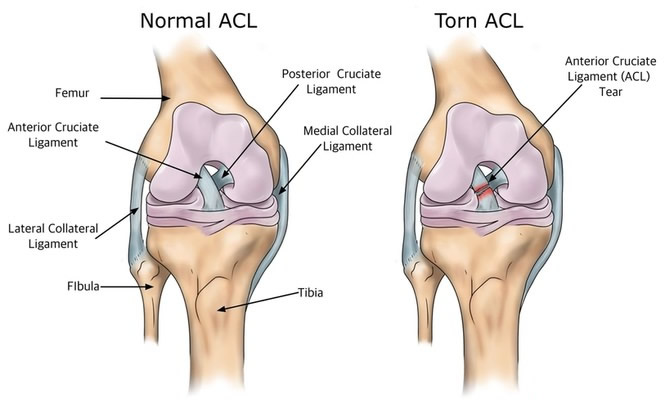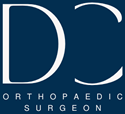ACL or Anterior Cruciate Ligament
The ACL or anterior cruciate ligament is one of the 4 main ligaments which stabilize the knee. The ACL sits in the center of the knee forming a cross or cruciate with the PCL or posterior cruciate ligament. The ACL acts to prevent forward translation of the tibia while also resisting rotation of the femur on the tibia.
ACL tear is commonly caused by a non-contact injury associated with a sudden change in direction or deceleration (while jumping or running) of the injured leg. Some people describe a ‘pop’ or tearing sensation in the knee and then develop immediate pain and swelling with reduced motion and the inability to weight bear. With certain movements, you may feel a sensation that the knee is going to give way, also known as instability.
Diagnosis of ACL injury requires physical examination and an MRI scan. The MRI can determine the severity of the injury as well as damage to other structures in the knee such as the meniscus or other ligaments.
When torn, the ACL cannot repair itself due to its position within the joint.
Recommended treatment is based on the patient’s age, symptoms and individual goals or needs. Non-surgical management may be undertaken for less active or older patients with pre-existing arthritis.
Surgery is recommended for those with ongoing instability symptoms, ambition to return to sport, especially pivoting sports such as soccer or football, and those with other injuries within the knee such as a meniscus or another ligament injury.
Surgery for a torn ACL involves reconstructing the ligament using a patients own tendons or a donor tendon. The graft choices include the hamstrings, patella and quadriceps tendon. Each graft choice has advantages and drawbacks and can be discussed during your consultation.

Rehabilitation from ACL Surgery is divided into 5 phases with distinct goals. You will be guided by your physiotherapist through each phase. Dr. Cohen and his team will work with you to personalize your treatment and tailor your rehabilitation protocol.
| Phase | Description | |
| 1 | Recovery from surgery | 2 weeks |
| 2 | Strengthening, balance and neuromuscular control | 2-12 weeks |
| 3 | Inline running, agility and landing | 3-6 months |
| 4 | Sport-specific training and drills | 6-12 months |
| 5 | Return to pivoting sport and re-injury prevention | 12 months |
For more information please visit: https://orthoinfo.aaos.org/en/diseases--conditions/anterior-cruciate-ligament-acl-injuries
Ready to take the next step?
Click on the 'GET IN TOUCH' button and provide your details,
and we'll reach out to arrange an appointment as soon as possible.
